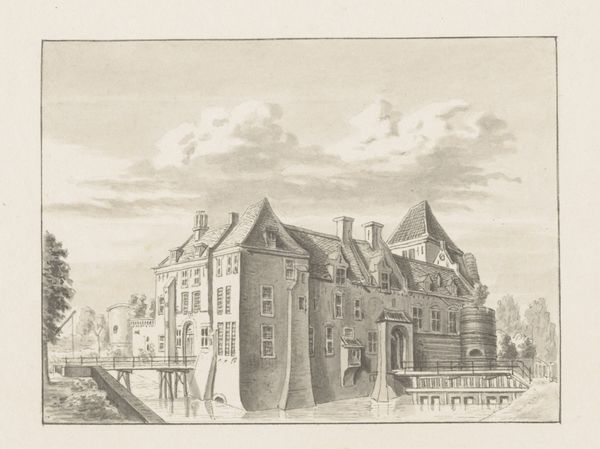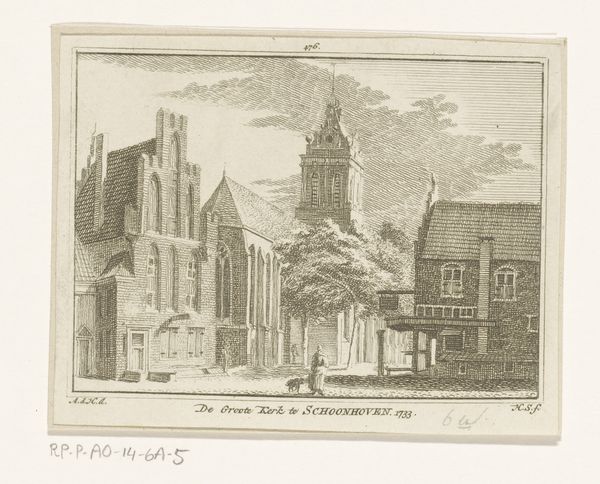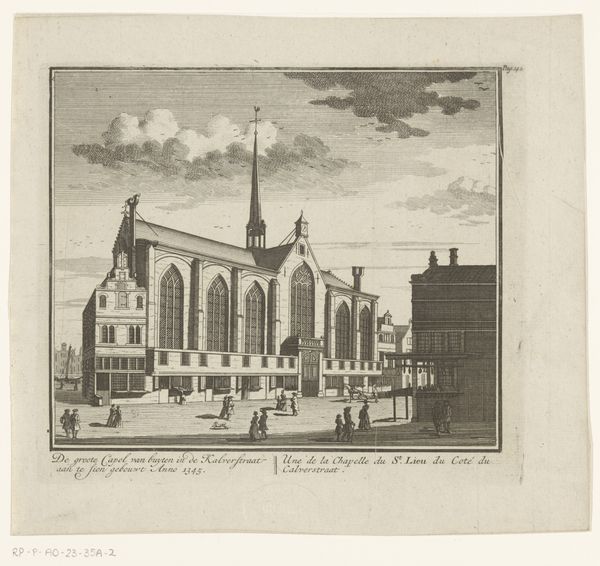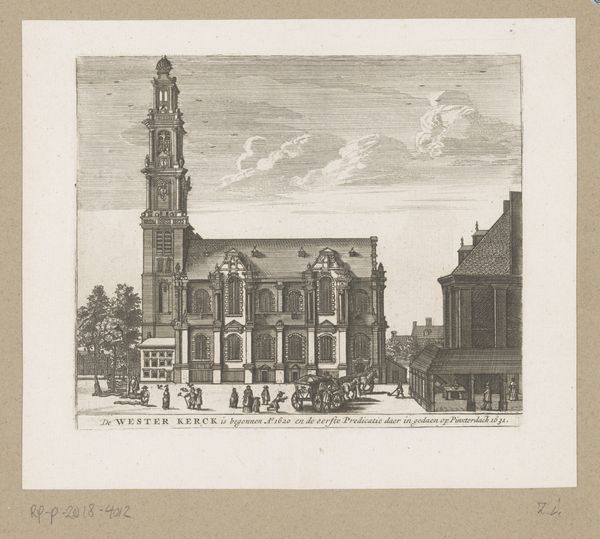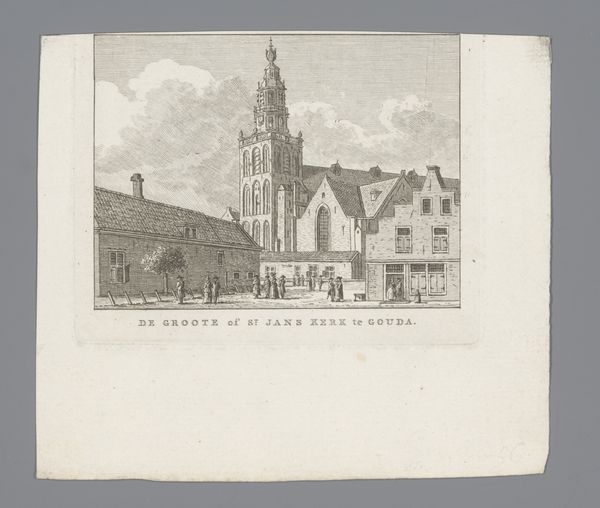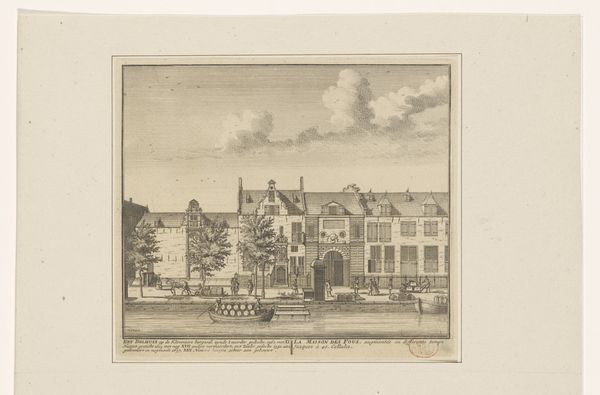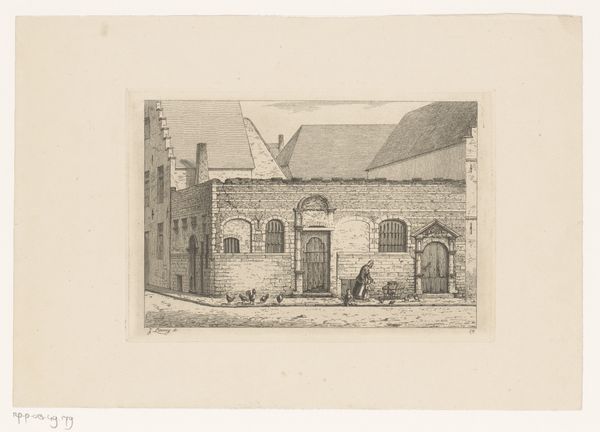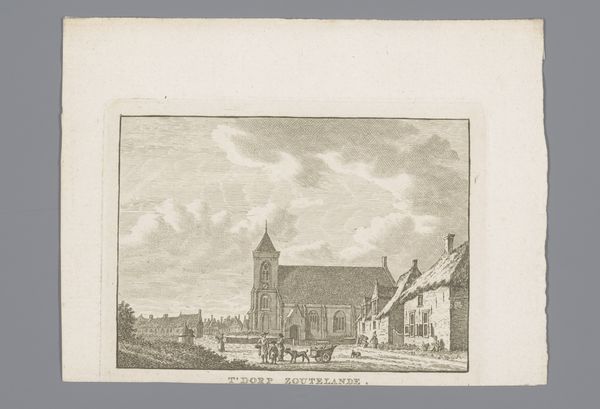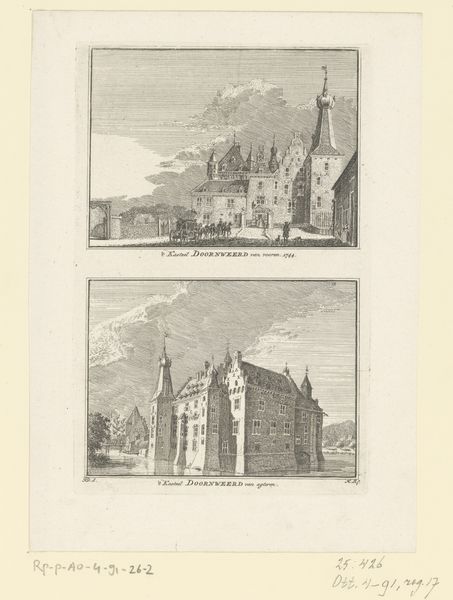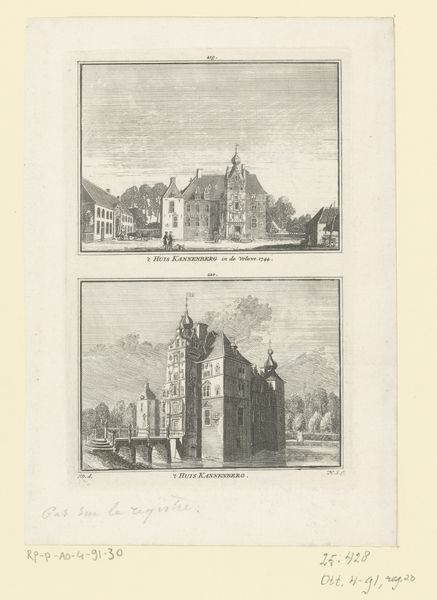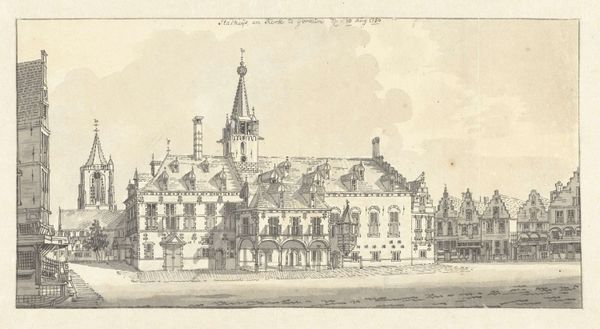
print, etching
#
baroque
#
dutch-golden-age
# print
#
etching
#
old engraving style
#
landscape
#
etching
#
cityscape
Dimensions: height 119 mm, width 138 mm
Copyright: Rijks Museum: Open Domain
Editor: This etching, "Gezicht op de Sint-Olofskapel (Oudezijds Kapel) te Amsterdam," was created by Jan Veenhuysen in 1664. It has a somewhat serene quality, despite the somewhat rigid depiction of the architecture. How do you interpret this work? Curator: I see an emphasis on the printmaking process, a form of material production itself. Etchings like this, reproduced for wider circulation, played a crucial role in shaping and distributing the image of Amsterdam's built environment during the Dutch Golden Age. Consider the labor involved – the meticulous work of the etcher translating architectural forms into lines on a metal plate. It becomes a kind of industrialized "snapshot". Editor: That's fascinating. So you're saying it’s not just about depicting the chapel, but also about the means of disseminating its image? Curator: Exactly. The choice of etching, a readily reproducible medium, speaks to a growing market for images – a consumer culture eager for views of their cities and monuments. The print's value, from a materialist perspective, resides less in its artistic 'aura' and more in its function as a commodity within a burgeoning capitalist society. Notice how the sky looks like a different plate or a different run, perhaps pointing to the material realities of the etching's making. Editor: That really shifts my perspective. I was focused on the architectural details, but now I'm thinking about the workshop where it was created and the people who bought it. What do you mean with the 'consumer culture'? Curator: By the 17th century, the Dutch Republic's robust economy stimulated art consumption by a larger group of individuals beyond the wealthy aristocracy. They used such affordable works to reflect the growing social value of merchants and urban life, which the print serves to display in private collections and personal environments, thus reflecting their identity in society. Editor: So it wasn't just about the building itself, but the growing importance of urban life for individuals? Curator: Precisely. This image serves as a potent reminder that what we often consider "high art" is deeply intertwined with material conditions, labor, and consumerism. This chapel became the product in a cycle of commerce in art. Editor: Thanks! Now I am seeing the cultural dynamics that underpinned its creation and how the meaning comes also from its material status. Curator: My pleasure. Art history opens doors once we also investigate materiality.
Comments
No comments
Be the first to comment and join the conversation on the ultimate creative platform.
